Bio
Drawing puts me in a meditative state, especially when the challenge is to capture the image of people. It transports me to a space where time stands still, creating an infinite yet intimate experience. I particularly enjoy drawing in airports, where people of all ages, sizes, and backgrounds await their flights. They are excellent subjects whether sleeping, talking, or engrossed in their cell phones. So, of course, I appreciate plane delays.
My goal in painting is to create visually enjoyable and intriguing works. I encourage viewers to question the artwork’s meaning, explore the theories presented, and understand the underlying logic, as these ideas can alter current perspectives on the subjects depicted in these paintings.
THE ROAD TO BECOMING AN ARTIST
In high school, my guidance counselor, Miss Lowe, who also taught history and English, reinforced my belief that pursuing art and drawing was impractical. As a result, I decided to earn a business degree. While saving for graduate school, I took some art classes. These classes convinced me to shift from pursuing an MBA from Berkley to studying architecture at UBC. Although I never became an architect, my time at the school boosted my confidence and taught me to trust in myself. UBC challenged the students to be creative and self-reliant, qualities I did not realize I was gaining at the time, but that other schools I attended had not imparted.
I returned to Montreal and started a business focused on restoring older buildings and saving elements from structures slated for demolition. A few years later, I sold the company, which provided me with sufficient funds to dedicate myself to painting and drawing. Afterward, while living in Halifax and taking classes at the Nova Scotia School of Art and Design. I decided to become a full-time artist. When I moved back to Florida, I taught art at the local college and in art leagues. I was surprised by how much I learned by helping others improve their skills.
My art blends images and ideas, often reflecting the realism of the past. My paintings evolve in tandem with theories of geomorphology and physics. They are figurative and occasionally border on the surreal. The designs are meant to engage viewers and prompt them to question and explore the narratives conveyed through my work.
I have been fortunate to have the support of two patrons who bought work and encouraged me on my artistic journey. I have also had the fortune of exhibiting my work in some prestigious galleries in New York, Washington DC, Montreal, Halifax, and Miami.

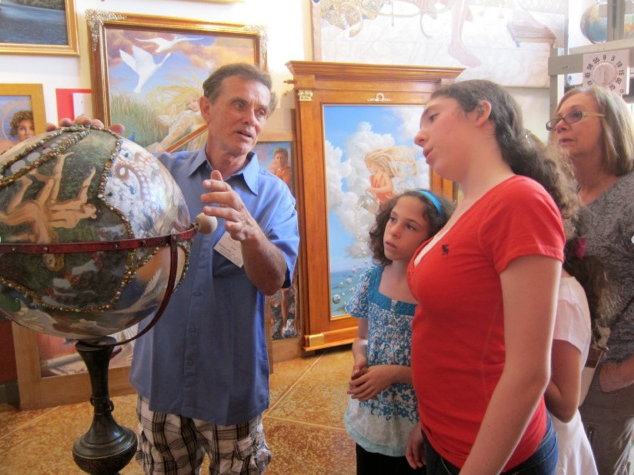
I have always aimed to capture the images of the world around me. I still have a drawing of an antique car I created in third grade and an oil painting of a ballet dress that I completed when I was 16. Over the years, my paintings and drawings have evolved to reflect my observations of the world and the various theories and scientific discoveries that arise from these observations.
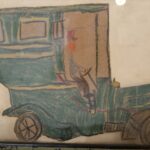
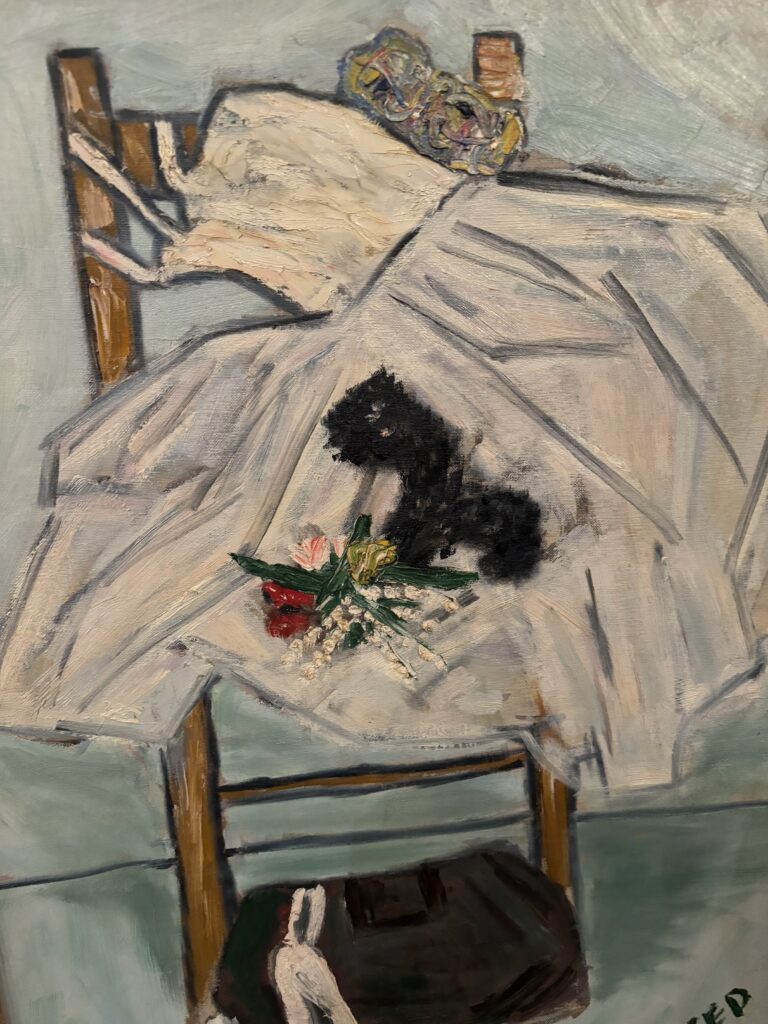
My mother’s story of saving her mother’s china and crystal during the Kamouraska earthquake in Montreal intrigued me. Knowing that Montreal’s Mount Royal had a volcanic past amplified my curiosity. Realizing that an enormous force had caused the white-veined intrusions in the exposed grey stone always filled me with trepidation about the mountain’s potential to awaken from its eons of slumber. This fear also sparked a lifelong fascination with geomorphology.
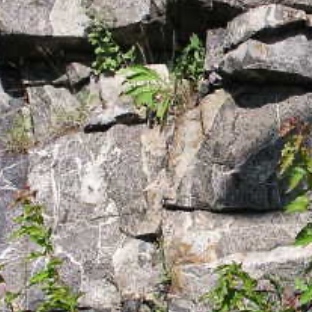
Additionally, learning about how repeated ice ages had worn down the mountain further fueled my fascination with the geological history around Montreal. As I delved into geology, I became increasingly dissatisfied with the specific explanations and theories of Earth’s history in geological science. The field has put forward theories and conjectures to explain Earth’s past, but these explanations are sometimes not clear or logical.
For example, science believes that the slow folding of sedimentary rock forms vast metamorphic rock in mountain ranges worldwide. This folding would require very high temperatures. However, this theory does not account for the fact that the heat produced by slow folding would dissipate before transforming the rock into metamorphic rock. On the other hand, rapid folding could have created significant heat, quickly producing large amounts of metamorphic rock and even causing geological phenomena such as pillow lava on the ocean floor, rapid climate changes, and magnetic pole reversals. European and Australian geologists have found these theories viable and recommended their publication.
Additionally, a U.S. Ph.D. climatologist has corroborated data on climate change, agreeing that we are in a climate cycle of approximately 100,000 years.
So, although geology and climate change were a great interest of mine, my career path took a different route. When I opted out of pursuing an MBA and enrolled in a graduate course in architecture, I did not become an architect. However, the classes ignited my interest in art. Many of my assignments turned into performance art. For instance, I once filled the architectural building’s lobby with three feet of crumpled newspaper during a weekly Friday Happy Hour for an assignment to effect points of transition. This unconventional approach helped people let go of their self-consciousness and pretentiousness, fostering more joyful and casual interactions.
Subsequently, after architectural school, I founded a salvage business focused on rescuing parts of buildings earmarked for demolition. The success of ‘Architectural Antiques’ granted me financial freedom after selling the company, enabling me to concentrate entirely on art and writing.
My tenure in the salvage business honed my skills working with wood, stone, marble, and stained glass. Interestingly, the skills I acquired in conserving stained glass windows have proved invaluable in my painting and frame-making endeavors.
It took me years to refine my painting techniques, drawing inspiration from old master paintings and incorporating contemporary settings. Gradually, I began integrating science as a central theme for my art, drawing from my fascination with the Earth and the stars.
My artistic journey led me to experiment with various painting methods, drawing influence from old masters like Titian, Rubens, and Rembrandt. Eventually, I developed a painting technique that yielded the desired results and gave my work a sense of directness. Using images of old masters’ images as references, I reproduced antique paintings with contemporary or imaginative settings.
As my ideas and themes evolved, my paintings began encompassing science-related concepts and contemporary issues. For Instance, paintings such as “Lucia’s and Penelope’s Gifts to God” and “The Rain Catchers” critiqued pollution and acid rain. At the same time, “Ozone Holiday” conveyed skepticism toward scientific views on atmospheric problems. “The Expanding Earth Theory” emerged as the inaugural painting resulting from my discovery and subsequent theory, offering a comprehensive explanation of Earth’s geological history and underscoring the perfect fit of continents on a miniaturized globe as evidence supporting the thesis.
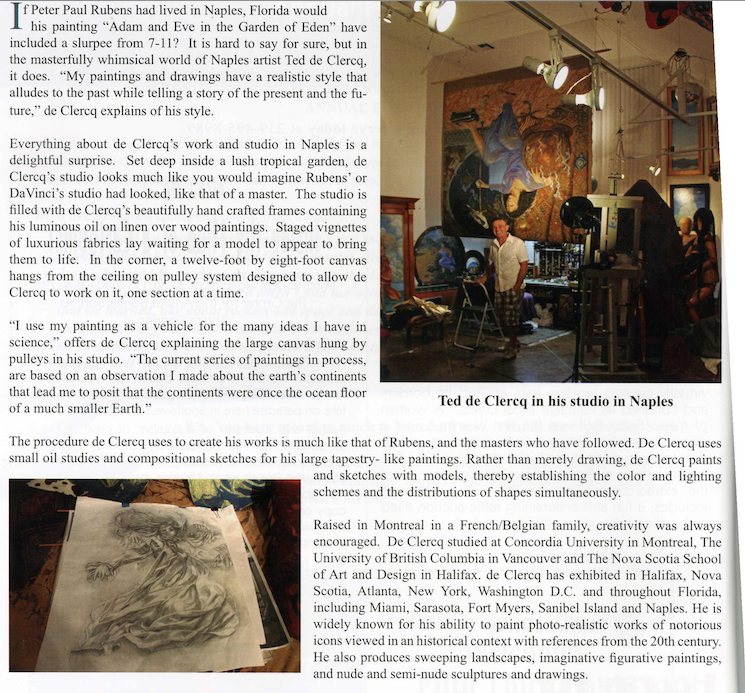
Building a Studio
In the mid-1980’s I rented a small house, in Florida, on four acres. Because it was cramped for painting space, the owner allowed me to build a very pleasant studio in the middle of the garden. Fortunately, with Florida’s mild climate, I constructed a studio for $1000.00, including paint, stain, and floor covering.
Also, I designed the structure with as little sawing as possible, putting it up in less than two weeks.
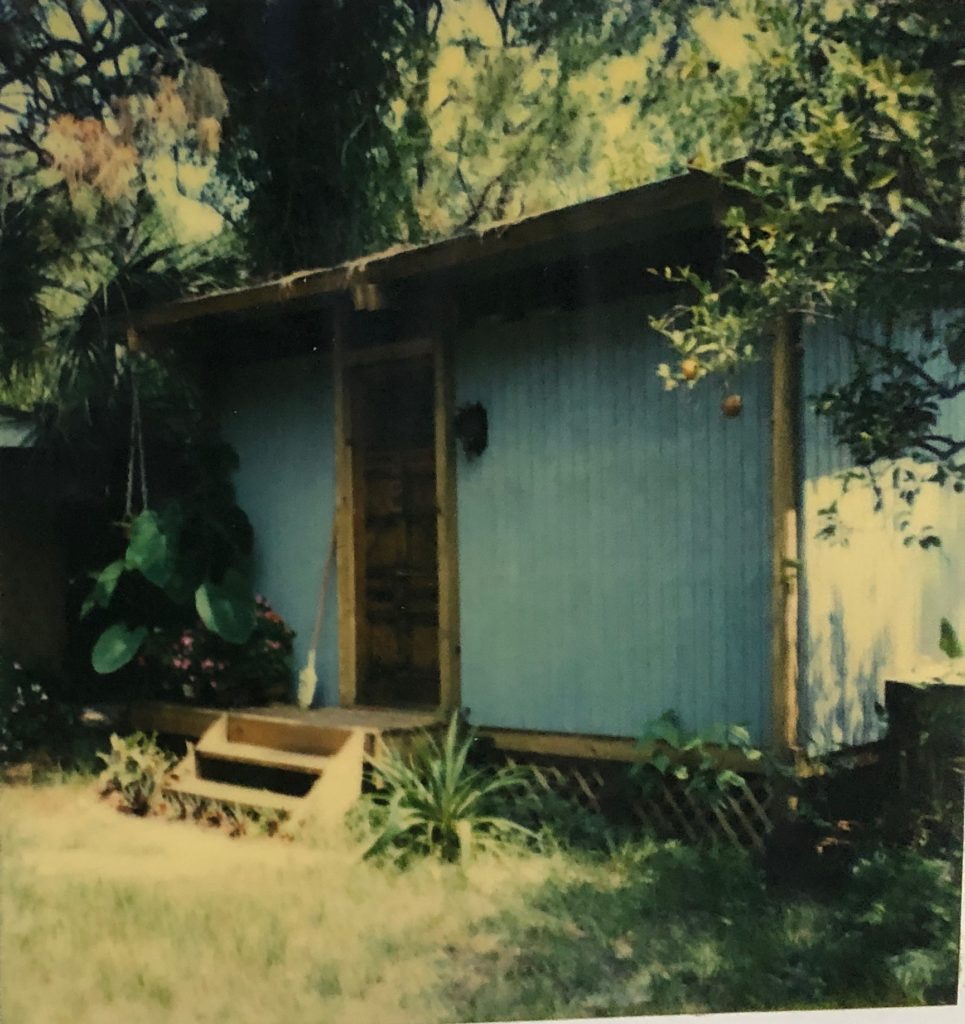
BUILDING A STUDIO
The Setting
The Studio
Add Your Heading Text Here
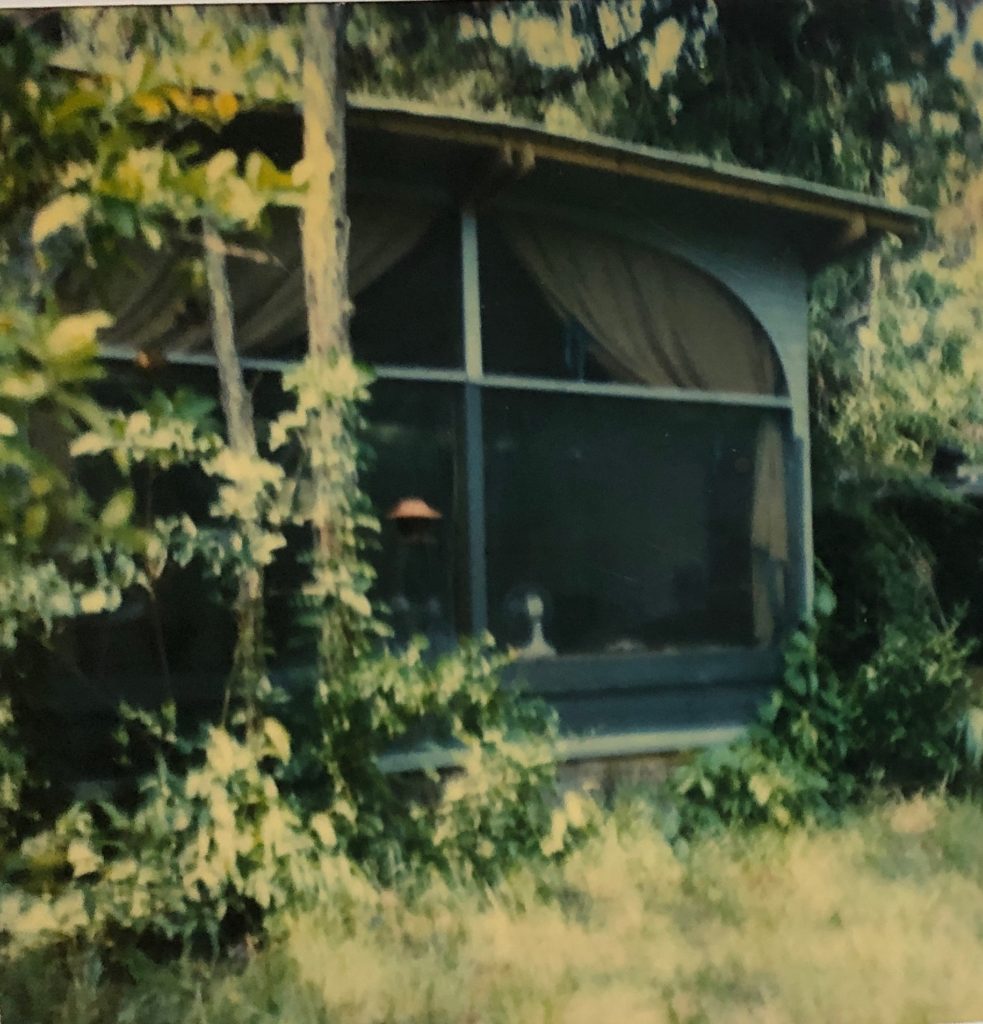
The finished structure was 12′ by 16’with ceilings 12′ high and had a sloped roof.
Also it had a big screened opening 14′ by 11′, which faced north, and a view of pine woods and palmetto. To the south of the studio was a neglected citrus orchard that produced a small quantity of exceptionally delicious oranges, tangerines, and grapefruit. Unfortunately these were exotic varieties whose provenance had been lost with the departure of the original owner.
Ventilation and Heating
The 14′ by 11; opening could be closed relatively snugly in lousy weather by plastic drops fitted into slots in the frame.
Air conditioning was not feasible as there only was electricity to run a couple of fans and the lights I needed to work. However the studio was designed to be cooled and heated by the sun.
During the day, the sun would warm the outside walls and the warm air in the wall cavity, creating a convection current drawing in cooler air from the floor. Accordingly there were openings instead of baseboards let air into the cavity. Consequently the warm air was pushed up and outside out through clerestory openings at the top of the wall. This air movement was continuous as long as the sun hit the building, creating a pleasant air movement. There were only a few weeks at the end of the summer when the evenings were very humid, hot, and uncomfortable even with the fans.
In the winter, when it was cold, I could close the clerestory openings by ropes attached to hinged wood panels, and the heat created in the walls would warm the building. As a result by 9:30 or 10 am. the studio would be toasty and warm. I had a kerosene heater for the chilly evenings.
The Moth Invasion
The studio and the setting were like heaven except for a problem with moths at night. Light from the studio was a beacon to them. Furthermore, the clerestory openings which I left open to cool the studio made the problem worse. Moths would cover the screens. So every time the door opened, a few moths would flutter into the studio and head to the light spots on my paintings and get stuck in the wet paint. Picking moths off the canvas was a persistent problem. Over time I attempted many solutions, including flypaper, curtains, and sprays. Nothing worked.
The Spider Solution
Introducing Nephila Clavipes

Then I had the idea of using spiders. After all they love bugs, so why not solve the problem with nature. I decided to try the golden silk spider or the banana spider (Nephila clavipes). Unlike the South American brown banana spider, which is very poisonous. Nephila clavipes is not deadly, doesn’t often bite, and grow large, up to five inches. In fact it can have a body as thick as a little finger, so it needs to eat a lot. These spiders make humongous webs of very strong sulfur yellow silk that can stretch 10 feet or more. I had walked into or bounced off of many a web walking in the garden. Finding a small banana spider near the studio, a female I brought back to my studio.
Picking up the outside lines of her web I carried her into my studio and attached the web to the top of my easel and a hanging lamp. She quickly made herself at home and repositioned the web to a position that better trapped the moths. Only snap or click beetle fireflies were able to get out of her web. They would just snap their backs and pop out of the web with one or two snaps. Their hard casing was great in avoiding her sting. In fact I never saw one become dinner.
Add Your Heading Text Here
Then I had the idea of using spiders. After all they love bugs, so why not solve the problem with nature. I decided to try the golden silk spider or the banana spider (Nephila clavipes). Unlike the South American brown banana spider, which is very poisonous. Nephila clavipes is not deadly, doesn’t often bite, and grow large, up to five inches. In fact it can have a body as thick as a little finger, so it needs to eat a lot. These spiders make humongous webs of very strong sulfur yellow silk that can stretch 10 feet or more. I had walked into or bounced off of many a web walking in the garden. Finding a small banana spider near the studio, a female I brought back to my studio.
Picking up the outside lines of her web I carried her into my studio and attached the web to the top of my easel and a hanging lamp. She quickly made herself at home and repositioned the web to a position that better trapped the moths. Only snap or click beetle fireflies were able to get out of her web. They would just snap their backs and pop out of the web with one or two snaps. Their hard casing was great in avoiding her sting. In fact I never saw one become dinner.
Add Your Heading Text Here
Living With a Spider
The problem was solved. Thus the spider was happy, well-fed, and grew to be huge, and best of all, my paintings were free of moth scales, wings, legs, and other body parts.
I quickly got used to her company. Subsequently, with a spider hanging over my head, it was easy to get to know her habits and routines as I was painting.
She was tidy to an extreme, dusting and cleaning the web constantly. She repaired the damage caused by insect struggles during their capture. As a result the web quickly returned to perfect symmetry. Cleaning and repairing the web meant she would eat the damaged part, letting dust and dirt fall to the floor and start over. I became used to her presence and got used to her routine. After having her in my studio for a while, I noticed the web getting torn, dusty, and neglected.
Was she ill or dying? As the web became neglected, she became less and less mobile and gradually just stayed at the center of the web, looking shabby and frayed. Finally, she stopped eating and sat almost motionless. Consequently I was worried and sad about what I thought was a serious problem. Suddenly she was twice her size. She had molted.
Add Your Heading Text Here
Spider's Vintage Clothes
She had a new body, her fur, body markings, and sheen was beautiful. However, she stayed immobile for a couple of days at the center of the web then went back to her routine housekeeping.
The unique part of her molting was that she kept her old casing or exoskeleton. She hung it up at the side of the web like a piece of clothing she might wear again if she lost weight. Every time she molted, she would hang her old suit next to the previous ones. It was not unusual to see three suites hanging neatly next to one another. She would always be careful when she would remake her web to rehang her old suits back up as they were before.
Spider Love
Add Your Heading Text Here
Despite the studio being totally enclosed, a male spider found its way into the studio and up onto her web. Much smaller than the female, he stayed quiet on the edge and opposite of his future mate. At first, I did not realize he was the same species and because he was so furtive and would sneak around the web and steal food when she was not aware of his presence. I learned this was a safety measure to avoid becoming dinner. He did not have a web of his own and was totally incompetent in supporting himself.
Later, when she died, he made a vain attempt to make a web. These few haphazard strands could never have caught anything.
I like to think that she was not aggressive towards him, just totally unaware he was not just another insect. She was so fast to sting and paralyze her pray that she would not have noticed that he had just killed her husband. He fed when his wife had the fortune of two insects being caught in the web simultaneously. She would paralyze the first, tie it up in silk, and race off secure the second. The moment she left the first, he would scramble to her first kill and have dinner while ensnared the second. His meals were always furtive, and he was quick to flee if he sensed her approach.
Spider Sex
Sex was always confined to the time when she molted. When she first emerged from the old casing, her new exoskeleton had not hardened, and she was vulnerable and would stay in the center of the web. The male would come to hold her in his arms(legs) until her new armor hardened. Once she started to get her strength back, he would leave her and retreat to the edge of the web again. She usually did not react to his movements, but he could sense her coming and darting away to safety if she did. His love was only fulfilled when she molted.
Babies
She became pregnant. Near delivery time, she left the web, and in a far corner of the studio, she proceeded to make a nest or a ball of yellow silk to deposit her eggs. When they hatched, they formed a web or curtain of hundreds of baby spiders. Too many spiders to have in my studio. So I moved the whole nursery to the outside and hung it on a few nearby tree branches. They lived there happily and gradually drifted off to other parts of the garden. Banana spiders only live for a year, and I picked a few of her offspring to stay in the studio, keeping my paintings free from the moths. So, over four years, I had one of the original spiders’ offspring in my studio.